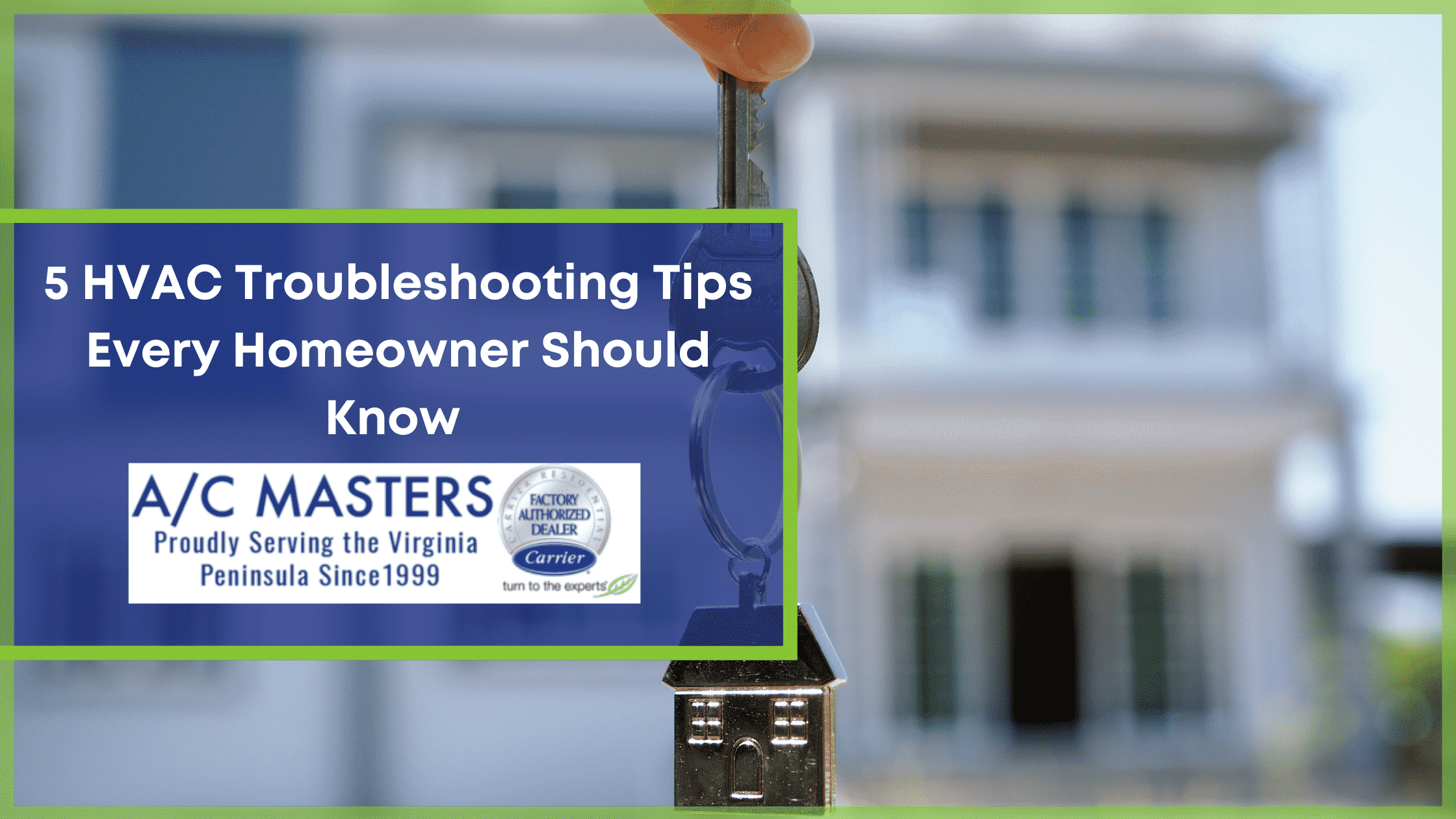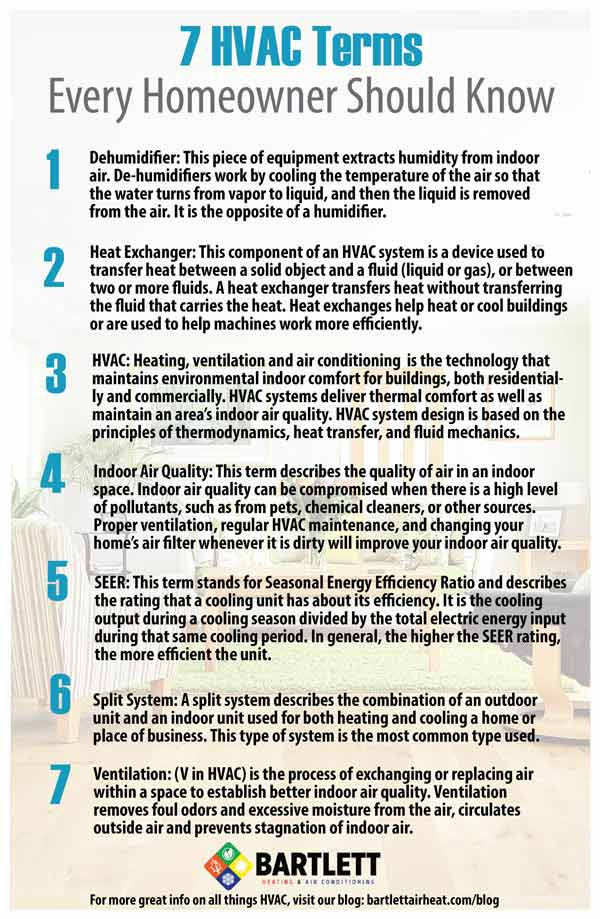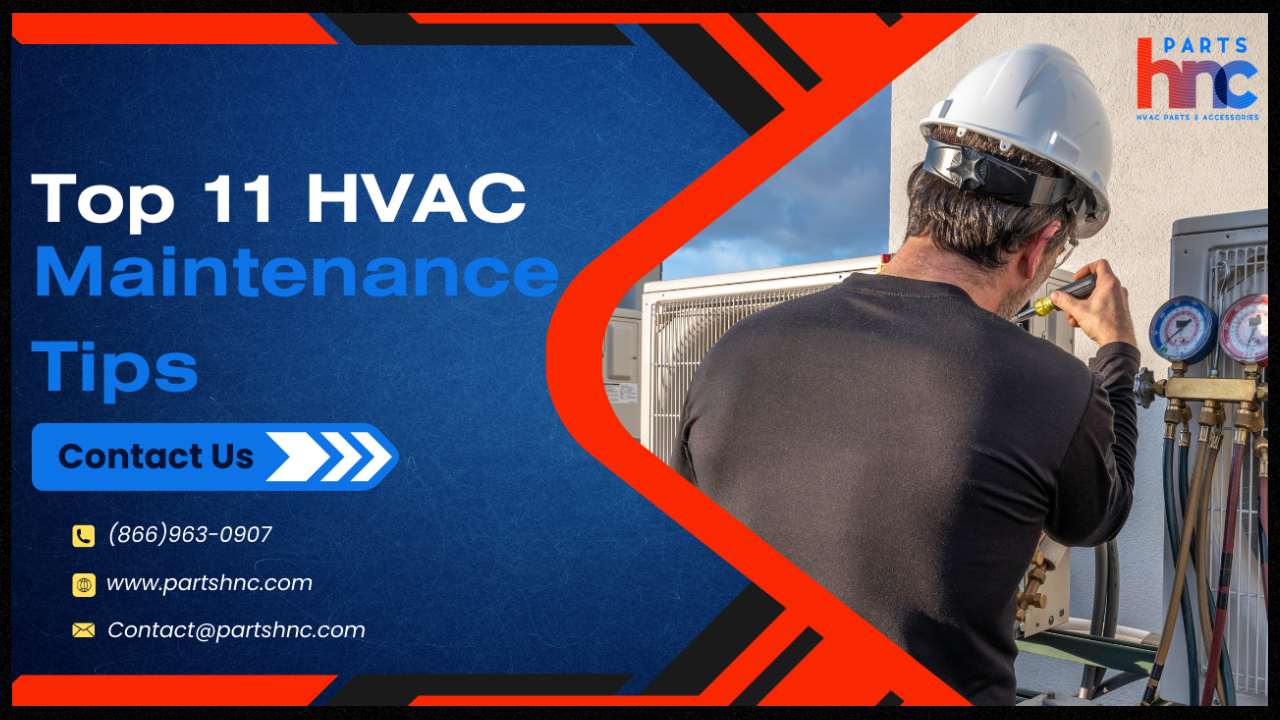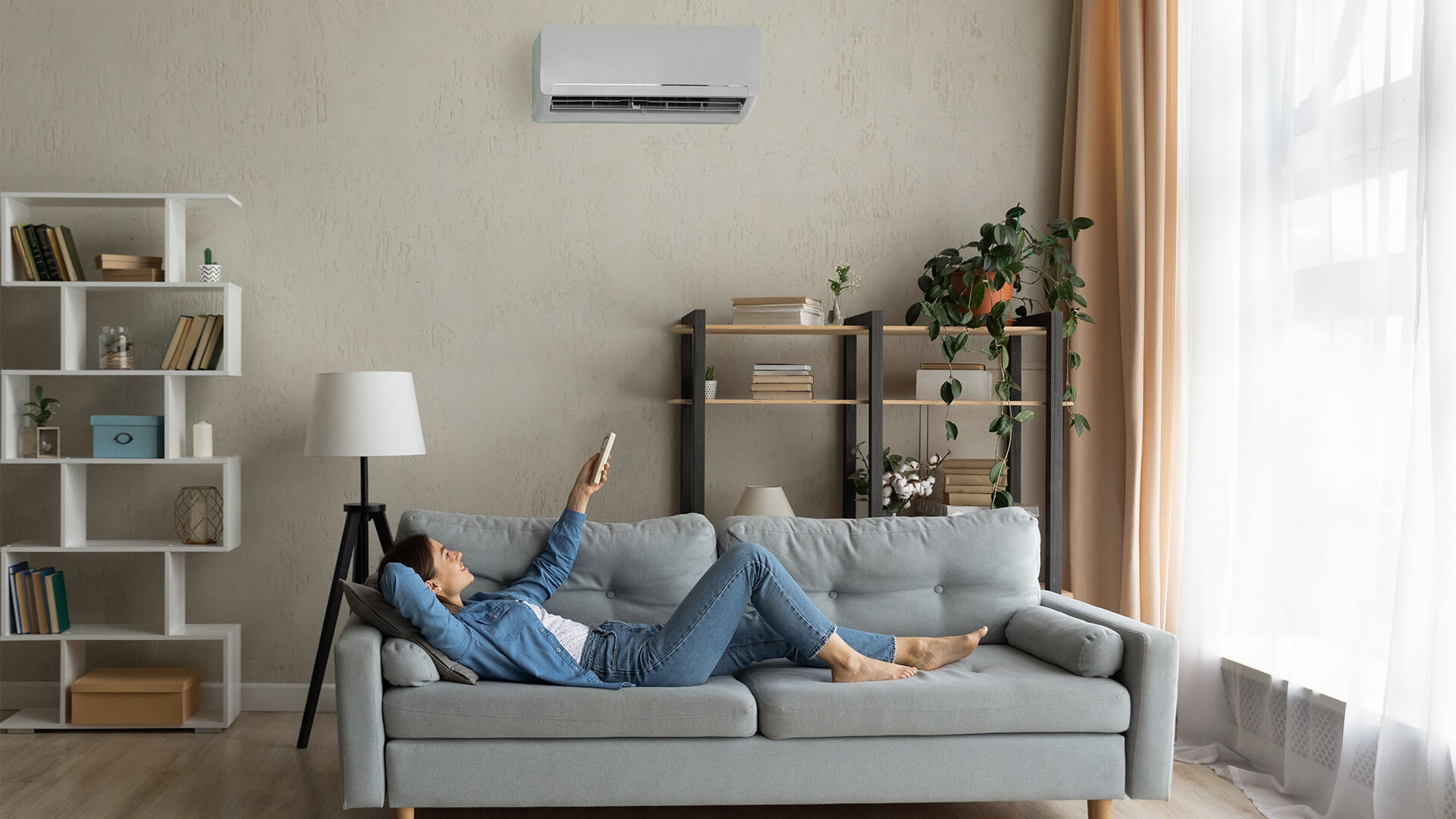So you’ve become a proud homeowner, and with that comes the responsibility of taking care of every aspect of your new abode, including the HVAC system. Whether you’re a first-time homeowner or have had experience with HVAC before, it’s always good to have some tips in your arsenal. In this article, we will explore some valuable insights and advice that every homeowner should know when it comes to mastering HVAC. From regular maintenance to energy-saving techniques, we’ve got you covered. So, let’s dive in and ensure your HVAC system keeps your home comfortable all year round. And hey, if you ever need a reliable HVAC company to assist you, don’t forget to check out Diamond Air Design in Pensacola, Florida.

This image is property of acmasters.com.
1. Understanding HVAC Systems
1.1 How HVAC Systems Work
HVAC stands for Heating, Ventilation, and Air Conditioning. These systems are designed to maintain a comfortable indoor environment by controlling temperature, humidity, and air quality. HVAC systems work by using a combination of heating, cooling, and ventilation components.
The heating component can be a furnace or a heat pump that provides warmth during colder months. The cooling component is typically an air conditioner that removes heat and humidity from the air during warmer months. Ventilation is the process of exchanging and circulating fresh air throughout the space to maintain air quality.
1.2 Types of HVAC Systems
There are various types of HVAC systems available, each suited for different types of homes and climates. The most common types include:
Split System: This is the most traditional HVAC system, consisting of an indoor unit (furnace/air handler) and an outdoor unit (condenser/heat pump). It circulates air through ducts, delivering heating or cooling to different areas of the home.
Packaged System: In this type, all components of the HVAC system, including the heating and cooling units, are housed in a single outdoor unit. This system is often installed in homes without sufficient indoor space.
Ductless Mini-Split System: These systems are ideal for homes without ductwork. They consist of an outdoor unit connected to one or more indoor units, allowing zoned heating and cooling in different areas of the home.
1.3 Common HVAC Terminology
To better understand HVAC systems, it’s helpful to be familiar with common HVAC terminology. Here are a few terms you may encounter:
BTU (British Thermal Unit): A unit used to measure the cooling or heating capacity of an HVAC system.
SEER (Seasonal Energy Efficiency Ratio): This rating determines the energy efficiency of an air conditioner. Higher SEER ratings indicate greater efficiency.
AFUE (Annual Fuel Utilization Efficiency): AFUE measures the efficiency of a furnace. It represents the percentage of fuel converted into usable heat.
MERV (Minimum Efficiency Reporting Value): MERV ratings indicate the effectiveness of an air filter in removing particles from the air. Higher MERV ratings indicate better filtration.
2. Importance of Regular Maintenance
2.1 Benefits of Regular HVAC Maintenance
Regular maintenance is crucial for keeping your HVAC system in optimal condition. Here are some key benefits of regular HVAC maintenance:
Improved Efficiency: Regular maintenance ensures that your HVAC system runs at its highest efficiency, reducing energy consumption and lowering utility bills.
Extended Lifespan: Routine maintenance helps extend the lifespan of your HVAC system by preventing major breakdowns and addressing minor issues before they escalate.
Enhanced Comfort: Well-maintained HVAC systems provide consistent heating and cooling, ensuring a comfortable indoor environment regardless of the weather outside.
Improved Air Quality: Proper maintenance includes cleaning or replacing air filters, which helps remove dust, allergens, and pollutants from the air, improving indoor air quality.
2.2 Frequency of HVAC Maintenance
It is generally recommended to have your HVAC system professionally serviced at least once a year. Spring or early summer is a good time for AC maintenance, while fall or early winter is ideal for heating system maintenance. Additionally, it’s important to schedule maintenance visits before the peak season to ensure timely service.
2.3 Hiring Professional HVAC Maintenance Services
While some routine HVAC maintenance tasks can be done by homeowners, it’s best to hire professional HVAC maintenance services for comprehensive and in-depth inspections. HVAC professionals have the expertise and tools to identify potential issues, clean components, lubricate moving parts, test system performance, and make any necessary repairs. Regular professional maintenance can help maximize the lifespan and efficiency of your HVAC system.
3. Troubleshooting Common HVAC Issues
3.1 Uneven Heating or Cooling
If you notice that certain areas of your home are warmer or cooler than others, it could be a sign of uneven heating or cooling. Possible causes of this issue include blocked vents, improper ductwork design, or a malfunctioning thermostat. Check and clean vents, ensure proper insulation around ducts, and consider getting your thermostat calibrated.
3.2 Poor Airflow
Poor airflow is often caused by clogged air filters or obstructed vents. Clean or replace dirty air filters regularly to ensure proper airflow. Additionally, check for any blockages or obstructions in the vents or ducts. If airflow issues persist, it’s advisable to contact an HVAC professional to inspect and diagnose the problem.
3.3 Noisy HVAC System
Unusual noises coming from your HVAC system can indicate underlying issues. Rattling, banging, or squealing noises may be caused by loose or worn-out components, such as belts, motors, or fans. Ignoring these noises can lead to more serious damage. Contact an HVAC technician to identify and resolve the source of the noise.
3.4 Excessive Energy Consumption
If you notice a significant increase in your energy bills without any change in usage patterns, it could be a sign of excessive energy consumption by your HVAC system. Possible causes include clogged air filters, dirty coils, or a malfunctioning thermostat. Regular maintenance, including cleaning or replacing filters, coil cleaning, and thermostat calibration, can help improve energy efficiency.
3.5 HVAC System Leaks
Leaks in the HVAC system can occur in various components, such as air ducts, refrigerant lines, or drain pans. These leaks can lead to reduced system performance, moisture accumulation, and even water damage. If you suspect a leak, it’s best to contact an HVAC professional for prompt detection and repair.
3.6 Thermostat Malfunctions
A malfunctioning thermostat can disrupt the proper functioning of your HVAC system. Issues may include inaccurate temperature readings, unresponsive controls, or non-functional programming. Check the thermostat batteries, clean the contacts, and ensure proper programming. If the problem persists, consider replacing the thermostat or seeking professional assistance.
3.7 HVAC System Won’t Turn On/Off
If your HVAC system fails to turn on or off, several factors could be responsible. Electrical issues, thermostat problems, or malfunctioning components may all contribute to this problem. Start by checking the circuit breaker and thermostat settings. If the issue persists, it’s recommended to contact an HVAC technician to diagnose and fix the problem.
3.8 Frozen or Iced-up HVAC Unit
A frozen or iced-up HVAC unit usually indicates airflow problems or refrigerant issues. Dirty air filters, blocked vents, or low refrigerant levels can lead to freezing, hindering the system’s ability to function properly. Shut off the system to allow the ice to thaw, then clean or replace the filters. If the issue persists, it’s important to have an HVAC professional inspect and repair the system.
4. Energy Efficiency Tips
4.1 Importance of Energy Efficiency
Energy efficiency is essential for reducing energy consumption and utility bills while minimizing the environmental impact. By adopting energy-efficient practices, you can help preserve natural resources, reduce greenhouse gas emissions, and contribute to a sustainable future.
4.2 Upgrading to Energy-Efficient Equipment
When considering HVAC upgrades, invest in energy-efficient equipment. Look for systems with high SEER ratings for air conditioners and AFUE ratings for furnaces. Energy-efficient models are designed to use less energy while providing optimal performance, resulting in long-term cost savings.
4.3 Programmable Thermostats
Programmable thermostats allow you to set temperature schedules based on your daily routine. This feature helps optimize energy usage by automatically adjusting the temperature when you’re away or asleep. By reducing unnecessary heating or cooling, programmable thermostats improve energy efficiency.
4.4 Zoning Systems
Zoning systems allow you to divide your home into independent temperature zones, each with its thermostat. This setup allows you to adjust heating and cooling based on specific room requirements, reducing energy waste. Zoning systems are especially useful for multi-story homes or areas with varying heating and cooling needs.
4.5 Proper Insulation and Sealing
insufficient insulation or air leaks can lead to energy loss and reduced HVAC efficiency. Ensure that your home is adequately insulated, paying attention to attics, walls, and crawl spaces. Seal any gaps or cracks around windows, doors, and ducts to prevent air leaks. Proper insulation and sealing help maintain a consistent indoor temperature and minimize the HVAC system’s workload.

This image is property of www.bartlettairheat.com.
5. Air Filter Maintenance
5.1 Importance of Clean Air Filters
Air filters play a crucial role in maintaining good indoor air quality by trapping dust, pollen, pet dander, and other airborne particles. Clean air filters not only improve air quality but also promote HVAC system efficiency and prevent unnecessary strain on the components.
5.2 How Often to Replace Air Filters
The frequency of air filter replacement depends on several factors, including the type of filter, the number of occupants in the home, and the presence of pets or allergies. As a general rule, it’s advisable to replace standard filters every 90 days or sooner if they become visibly dirty. However, high-efficiency filters may require replacement every 60 days or even monthly.
5.3 Types of Air Filters
There are different types of air filters available, each with varying efficiency levels and capabilities. The most common types include fiberglass filters, pleated filters, electrostatic filters, and HEPA filters. Consider your specific air quality needs and consult an HVAC professional to determine the most suitable filter type for your home.
5.4 DIY Air Filter Replacement
Replacing air filters is a relatively simple process and can often be done by homeowners. Start by turning off the HVAC system, locating the filter in the indoor unit or return air vent, and removing the old filter. Insert the new filter, ensuring it is facing in the correct direction. Finally, turn the HVAC system back on and check for proper airflow.
5.5 Hiring Professionals for Air Filter Replacement
While homeowners can handle basic air filter replacement, it’s recommended to have HVAC professionals perform more complex tasks. HVAC experts can help you choose the right filter type, correctly install filters, and provide comprehensive system inspections to identify any underlying issues affecting air quality.
6. Maintaining Indoor Air Quality
6.1 Understanding Indoor Air Quality
Indoor air quality (IAQ) refers to the quality of air inside a building or enclosed space and its impact on the health and comfort of individuals. Poor IAQ can lead to various health issues, including allergies, asthma, respiratory problems, and discomfort. Maintaining good IAQ is crucial for a healthy living environment.
6.2 Common Indoor Air Pollutants
Indoor air can contain various pollutants, including dust, pollen, pet dander, mold spores, volatile organic compounds (VOCs), and chemical pollutants. These pollutants can originate from sources such as cleaning products, furniture, carpets, smoking, and outdoor air infiltration. Regular ventilation and proper filtration help reduce the accumulation of these pollutants.
6.3 Ventilation Systems
Proper ventilation is essential for maintaining good IAQ. Ventilation systems help exchange indoor and outdoor air, removing stale air and pollutants while introducing fresh air. Simple ventilation practices include opening windows, using exhaust fans in kitchens and bathrooms, and ensuring proper airflow throughout the home. Additionally, mechanical ventilation systems, such as air exchangers or energy recovery ventilators, can provide controlled and efficient ventilation.
6.4 Humidity Control
Maintaining appropriate humidity levels is crucial for good IAQ. Excessive humidity can promote mold growth and worsen allergic reactions, while low humidity can cause dry skin, respiratory discomfort, and increased susceptibility to infections. Use humidifiers or dehumidifiers to maintain optimal humidity levels, typically between 30% and 50%, depending on the climate.
6.5 Air Purification Systems
Air purification systems, such as air purifiers or whole-house filtration systems, can help remove particles, allergens, and chemical pollutants from the air. Consider installing HEPA filters, activated carbon filters, or electronic air cleaners to target specific pollutants. Consult an HVAC professional to determine the most suitable air purification system for your home’s needs.

This image is property of www.partshnc.com.
7. Maximizing Heating Efficiency in Winter
7.1 Proper Insulation
During winter, proper insulation is crucial for preventing heat loss and maintaining indoor warmth. Ensure that walls, attics, and crawl spaces are adequately insulated. Seal any gaps or cracks around windows and doors to prevent drafts. Proper insulation helps reduce heating costs and ensures a comfortable indoor environment.
7.2 Sealing Air Leaks
Air leaks, such as those around windows, doors, and ducts, can significantly impact heating efficiency. Use weatherstripping or caulk to seal gaps and cracks, preventing cold air from entering and warm air from escaping. Consider applying insulation foam to larger gaps or insulating ductwork to minimize heat loss and improve heating efficiency.
7.3 Heating System Tune-Up
Schedule a professional heating system tune-up before the start of the winter season. HVAC technicians can inspect and clean components, ensure proper system operation, and identify any potential issues. Regular maintenance helps optimize heating efficiency, extend the system’s lifespan, and ensure safe and reliable operation.
7.4 Using Ceiling Fans
While often associated with cooling, ceiling fans can also help improve heating efficiency in winter. By running ceiling fans in reverse (clockwise) at a low speed, warm air trapped near the ceiling is pushed downward, reducing temperature stratification and improving overall comfort. This allows you to maintain a lower thermostat setting without sacrificing warmth.
7.5 Thermostat Programming
Programmable thermostats offer significant energy savings by allowing you to set lower temperatures when you’re away or asleep. Aim for a comfortable temperature when you’re home and gradually reduce the temperature during periods of inactivity or overnight. Each degree you lower the thermostat can result in energy savings of up to 3%.
8. Optimizing Cooling Efficiency in Summer
8.1 Setting the Right Thermostat Temperature
During hot summer months, it’s important to set your thermostat to the right temperature to optimize cooling efficiency. The recommended temperature for optimal comfort is typically between 72°F and 78°F. Adjust the temperature based on personal preference, but avoid setting it too low, as this can significantly increase energy consumption.
8.2 Using Ceiling Fans
Ceiling fans provide a cooling effect by creating a breeze that helps evaporate moisture from your skin, making you feel cooler. Using ceiling fans allows you to raise the thermostat temperature by a few degrees without sacrificing comfort. Remember to turn off fans when you’re not in the room to save energy.
8.3 Closing Curtains or Blinds
An effective way to reduce heat gain from sunlight is by closing curtains or blinds during the hottest parts of the day. This helps block sunlight and prevents it from heating up your home. Consider using light-colored curtains or reflective blinds to minimize heat absorption.
8.4 Avoiding Heat-Generating Appliances
Many common appliances, such as ovens, stovetops, dishwashers, and dryers, generate a significant amount of heat. To reduce the workload on your cooling system, avoid using these appliances during the hottest parts of the day. Instead, opt for using them in the early morning or late evening when outdoor temperatures are lower.
8.5 Regular AC Maintenance
Regular maintenance is crucial for optimizing cooling efficiency and preventing unexpected breakdowns. Schedule professional AC maintenance before the start of the summer season to ensure the system is in good working condition. HVAC technicians can clean the coils, check refrigerant levels, lubricate moving parts, and address any potential issues, improving overall system performance.

This image is property of www.build-review.com.
9. Common HVAC Safety Tips
9.1 Proper Ventilation
Maintaining proper ventilation is essential for HVAC system safety. Ensure that vents and air registers are unobstructed, allowing for easy air circulation. Additionally, avoid blocking air intake areas with furniture or other objects. Proper ventilation helps prevent the buildup of carbon monoxide, VOCs, and other harmful gases in your home.
9.2 Carbon Monoxide Detectors
Carbon monoxide (CO) is a colorless, odorless gas that can be emitted by fuel-burning appliances, such as furnaces, water heaters, and gas stoves. Install carbon monoxide detectors on every level of your home to ensure early detection of CO leaks. Test the detectors regularly and replace the batteries at least once a year.
9.3 Fire Safety Precautions
To protect against the risk of fire, take the following precautions:
- Avoid overloading electrical outlets or using extension cords excessively.
- Keep flammable materials away from heating equipment.
- Have your HVAC system inspected regularly to ensure safe operation.
- Install smoke detectors in your home and test them regularly.
- Create a fire escape plan and practice it with your family.
9.4 Outdoor Unit Protection
If you have an outdoor HVAC unit, it’s important to protect it from potential damage. Keep the surrounding area clean and free of debris, leaves, and vegetation. Trim any plants or shrubs around the unit to ensure proper airflow. During stormy weather or in the off-season, consider covering the unit with a specialized cover to prevent damage from debris or harsh elements.
10. Signs It’s Time to Replace Your HVAC System
10.1 Age of the HVAC System
Typically, HVAC systems can last between 15 and 20 years with regular maintenance. If your system is approaching or exceeding this age range, it may be time to consider a replacement. Older systems tend to be less energy-efficient and more prone to breakdowns, costing more in repairs and higher energy bills.
10.2 Frequent Repairs
If you find yourself contacting HVAC professionals for frequent repairs, it might indicate that your system is no longer reliable. Continual breakdowns can be a sign of underlying issues that are best addressed by replacing the system rather than temporarily fixing individual components.
10.3 Rising Energy Bills
A sudden increase in energy bills can be a result of an inefficient HVAC system. As systems age, their efficiency tends to decline, causing them to consume more energy to achieve the desired temperature. If your energy bills have been consistently rising despite normal usage, it may be time for a more energy-efficient replacement.
10.4 Inconsistent Indoor Temperatures
If your HVAC system struggles to maintain a consistent temperature throughout your home, it may be a sign of a failing system. Uneven heating or cooling can be caused by worn-out parts, malfunctioning components, or an improperly sized system. Upgrading to a new, correctly sized and efficient system can help resolve this issue.
10.5 Lack of Comfort
If you’re experiencing decreased comfort levels in your home, such as persistent hot or cold spots, it may indicate that your HVAC system is no longer capable of meeting your specific needs. Upgrading to a more advanced system can provide better temperature control and enhanced overall comfort.
In conclusion, understanding HVAC systems and implementing proper maintenance, troubleshooting, and energy-saving practices is essential for every homeowner. Regular HVAC maintenance, professional inspections, and addressing issues promptly contribute to system longevity, energy efficiency, and indoor comfort. By adopting energy-efficient equipment, proper air filter maintenance, and focusing on indoor air quality, you can create a healthier and more comfortable living environment. Remember to periodically assess your HVAC system’s condition and consider a replacement if it exhibits signs of age, frequent repairs, rising energy bills, inconsistent temperatures, or lack of comfort. By mastering these HVAC tips, you can ensure optimal performance and enjoyment of your home’s heating and cooling systems.
The post Mastering HVAC: Tips Every Homeowner Should Know appeared first on Diamond Air Design.




